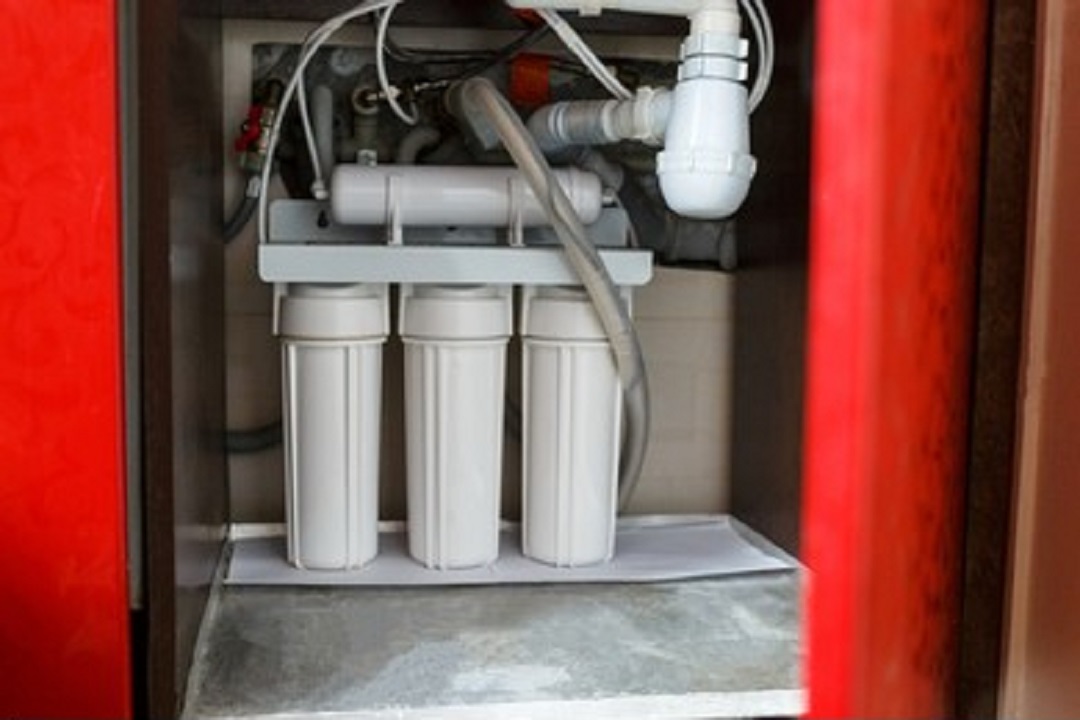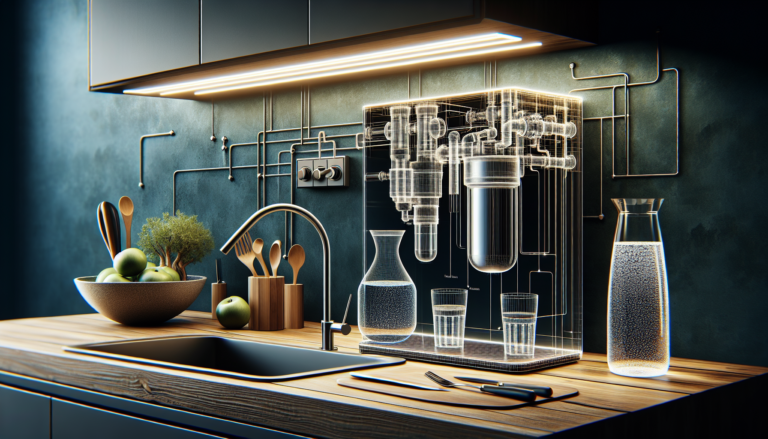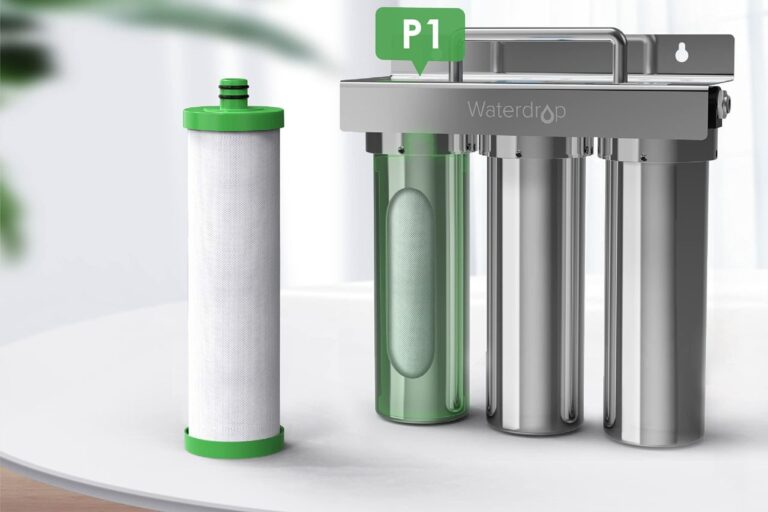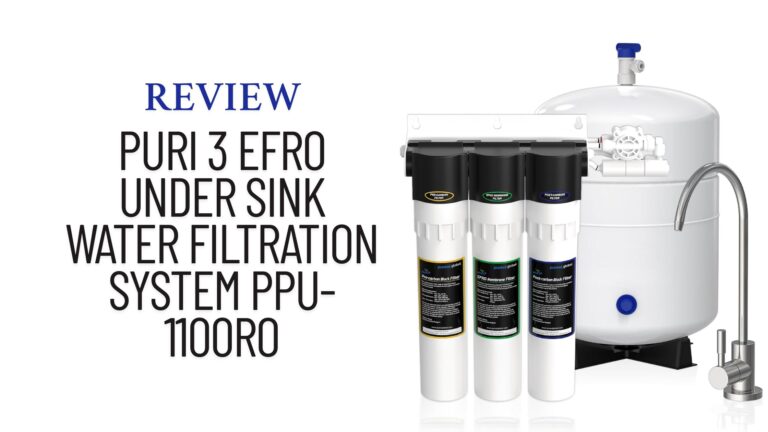Should I Purchase an Under Sink Water Filter System?
Are you concerned about the quality of your drinking water? With numerous contaminants potentially lurking in your tap water, it’s natural to wonder if an under sink water filter system is the right solution for you.
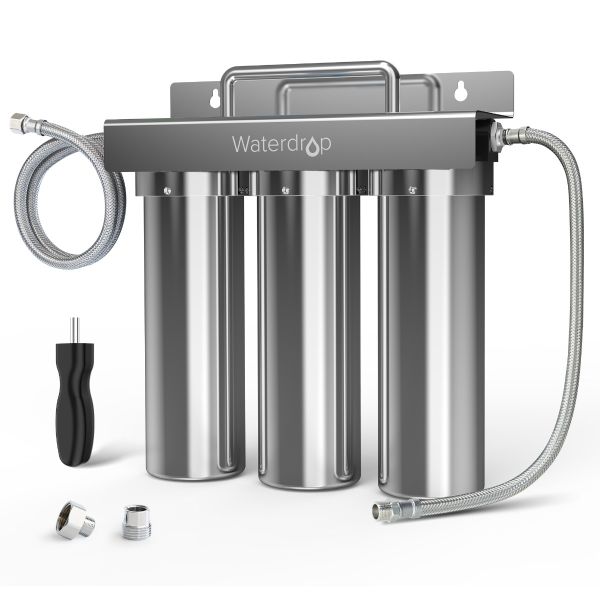
Clean drinking water is essential for health, and under sink filters can play a significant role in achieving this. The decision to invest in such a system depends on several factors, including your specific water quality needs and budget.
Key Takeaways
- Assess your water quality needs before deciding on a filter.
- Consider the installation and maintenance costs.
- Look for filters with high contaminant removal rates.
- Check for certifications from reputable third-party organizations.
- Evaluate the filter’s lifespan and replacement costs.
Understanding Under Sink Water Filter Systems
Installed beneath the kitchen sink, under sink water filter systems connect directly to the home’s cold water line, providing filtered water on demand. These systems are designed to improve the quality of drinking water by removing various contaminants.
What Are Under Sink Water Filter Systems?
Under sink water filter systems are designed to filter water before it reaches the faucet, ensuring cleaner drinking water. They are a popular choice for homeowners seeking to improve their tap water quality.
Basic Components and Design
A typical under sink water filter system includes a filter unit, mounting hardware, and tubing to connect to the water supply and faucet. The design may vary depending on the type of filtration.
Single vs. Multi-Stage Filtration
Single-stage systems use one filter, while multi-stage systems use multiple filters, offering enhanced contaminant removal. The choice between them depends on specific water quality needs.
The benefits of under sink water filter systems include improved water taste and removal of harmful contaminants, making them a valuable addition to many homes.
Common Water Quality Issues in American Homes
Many American homes face common water quality issues that can affect the health and taste of their tap water. These issues can arise from various contaminants and regional variations in water quality.
Contaminants Found in US Tap Water
Tap water in the US can contain a range of contaminants, including chemicals and biological agents. Understanding these contaminants is crucial for selecting the right water filtration system.
Chemical Contaminants
Chemical contaminants include substances like lead, chlorine, and pesticides. These can enter the water supply through industrial waste, agricultural runoff, and aging infrastructure. For instance, lead can leach into water from old pipes, posing serious health risks, especially to children.
Biological Contaminants
Biological contaminants include bacteria, viruses, and parasites. These can cause a range of health issues, from mild gastrointestinal problems to severe illnesses. Giardia and Cryptosporidium are examples of parasites that can be present in contaminated water.
Regional Water Quality Variations
Water quality can vary significantly across different regions due to factors like source water quality, treatment processes, and distribution systems.
Urban vs. Rural Water Concerns
Urban areas may face different water quality challenges compared to rural areas. For example, urban water supplies might contain more industrial contaminants, while rural areas might be more susceptible to agricultural runoff.
How to Test Your Water Quality
Testing your water quality is essential to understand what contaminants are present. You can use DIY test kits or hire a professional to conduct a comprehensive analysis. Regular testing helps ensure that your water filtration system is effectively removing contaminants.
| Contaminant Type | Examples | Health Risks |
|---|---|---|
| Chemical | Lead, Chlorine, Pesticides | Neurological damage, Cancer, Reproductive issues |
| Biological | Bacteria, Viruses, Parasites | Gastrointestinal illness, Severe infections, Long-term health effects |
Benefits of Installing an Under Sink Water Filter System
Under sink water filters offer numerous benefits for homeowners looking to improve their water quality. These systems provide a comprehensive solution to various water quality issues, enhancing both the safety and taste of drinking water.
Improved Water Taste and Odor
One of the most immediate benefits of under sink water filters is the improvement in water taste and odor. This is primarily achieved through:
Removal of Chlorine and Sulfur Compounds
Chlorine and sulfur compounds are commonly used in water treatment processes but can impart unpleasant tastes and odors. Under sink filters, especially those with activated carbon, are effective at removing these compounds, resulting in fresher-tasting water.
Removal of Harmful Contaminants
Beyond improving taste, under sink water filters are crucial for removing harmful contaminants from drinking water.
Protection Against Lead and Heavy Metals
Lead and other heavy metals can have serious health implications. Under sink filters with specialized media can effectively reduce these contaminants, safeguarding your health.
Reduction of PFAS and Emerging Contaminants
PFAS (Per- and Polyfluoroalkyl Substances) and other emerging contaminants are increasingly recognized as potential health risks. Advanced under sink filtration systems are designed to address these contaminants, providing an additional layer of protection.
Environmental Benefits Over Bottled Water
Under sink water filters also offer significant environmental benefits compared to relying on bottled water.
Plastic Waste Reduction
By having filtered water at home, the need for single-use plastic bottles is greatly reduced, contributing to less plastic waste.
Carbon Footprint Comparison
The production, transportation, and storage of bottled water have a substantial carbon footprint. In contrast, under sink water filters have a much lower environmental impact, making them a more sustainable choice for clean drinking water.
In conclusion, under sink water filters provide a multitude of benefits, from improving the taste and safety of drinking water to offering environmental advantages. By understanding these benefits, homeowners can make informed decisions about their water filtration needs.
Potential Drawbacks to Consider
Before installing an under sink water filter, it’s crucial to understand the potential downsides, including cost and maintenance issues. While these systems offer numerous benefits, they are not without their challenges.
Initial Cost and Installation Expenses
The initial cost of an under sink water filter system can be significant, including both the purchase price of the system and the cost of installation. Professional installation can add several hundred dollars to the upfront cost.
Average System Pricing
| System Type | Average Cost |
|---|---|
| Basic Carbon Filtration | $100-$300 |
| Reverse Osmosis | $200-$500 |
| Ultrafiltration | $150-$400 |
Maintenance Requirements
Regular maintenance is necessary to ensure the system works effectively. This includes replacing filters periodically, which can add to the overall cost.
Filter Replacement Frequency
Filter replacement frequency varies depending on the system and usage. Typically, filters need to be replaced every 6 to 12 months. Regular maintenance checks can help identify when replacements are needed.
Space Considerations
Under sink water filters require space under the sink for installation, which can be a challenge in smaller kitchens.
Cabinet Space Requirements
It’s essential to assess the available cabinet space before installation. Some systems are more compact than others.
Impact on Storage
The installation of an under sink water filter system may reduce available storage space under the sink. Planning ahead can help mitigate this issue.
Types of Under Sink Water Filter Systems
Under sink water filter systems vary widely, including reverse osmosis, carbon filtration, and ultrafiltration. Each type has its unique features and benefits, catering to different water quality needs.
Reverse Osmosis Systems
Reverse osmosis (RO) systems are known for their thorough filtration capabilities. They use a semi-permeable membrane to remove a wide range of contaminants.
Filtration Capabilities
RO systems can remove up to 99% of contaminants, including dissolved solids, bacteria, viruses, and heavy metals, making the water very pure.
Water Waste Considerations
One of the drawbacks of RO systems is that they can waste a significant amount of water during the filtration process. However, some modern systems are designed to be more water-efficient.
Carbon Filtration Systems
Carbon filtration systems use activated carbon to remove impurities from the water. They are effective at improving the taste and odor of water.
Activated Carbon Technology
Activated carbon works by attracting and holding onto chemicals and heavy metals, thus purifying the water. It’s a popular choice for under sink water filters due to its effectiveness and relatively low maintenance.
What They Remove vs. What They Don’t
While carbon filters are good at removing chlorine, lead, and volatile organic compounds (VOCs), they may not remove all dissolved solids or certain microbial contaminants.
Ultrafiltration Systems
Ultrafiltration (UF) systems use a membrane with smaller pores than those in microfiltration systems, allowing them to filter out bacteria, viruses, and parasites.
Membrane Technology
The membrane technology in UF systems is designed to be more resistant to certain types of contaminants and can be more effective in some cases than RO or carbon filtration alone.
Comparison with Other Types
UF systems are often compared to RO systems for their filtration capabilities. While both are effective, UF systems typically operate at lower pressures and may not remove dissolved solids as effectively as RO.
When choosing an under sink water filter, it’s essential to consider the type of contaminants you want to remove, the maintenance requirements, and the overall cost.
Should I Purchase an Under Sink Water Filter System? Key Considerations
To determine if an under sink water filter system is right for you, it’s essential to evaluate several crucial factors. When deciding to purchase an under sink water filter, several key considerations must be taken into account. This includes assessing your water quality needs, budget considerations, and available space for installation.
Assessing Your Water Quality Needs
Understanding the quality of your tap water is vital. You can start by reviewing local water quality reports or conducting home tests to identify contaminants.
Using Water Quality Reports
Local water quality reports can provide valuable insights into the contaminants present in your tap water. These reports are often available on your local water utility’s website or by request.
Home Testing Options
For a more detailed analysis, consider using home water testing kits. These kits can detect a range of contaminants, from heavy metals to bacteria.
Budget Considerations
Budget plays a significant role in deciding whether to purchase an under sink water filter system. You need to consider both the initial investment and long-term costs.
Initial Investment vs. Long-term Costs
The initial cost of the filter system, along with installation expenses, should be weighed against the long-term costs of replacement filters and maintenance.
Cost Comparison with Bottled Water
Compare the cost of an under sink water filter system with the ongoing expense of bottled water. Filter systems are often more cost-effective in the long run.
Available Space and Installation Requirements
Before making a purchase, assess the available space under your sink and consider the installation requirements.
Measuring Your Under Sink Area
Measure the space under your sink to ensure the filter system you choose fits comfortably.
Compatibility with Existing Plumbing
Check that the filter system is compatible with your existing plumbing to avoid any installation issues.
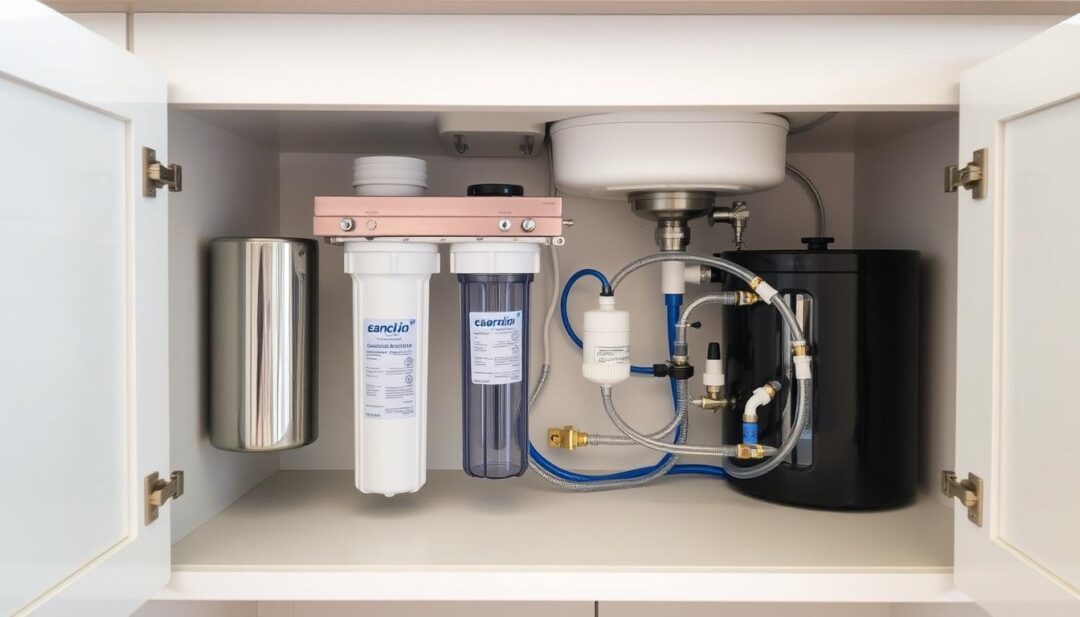
By carefully considering these factors, you can make an informed decision about whether an under sink water filter system is the right choice for your home.
Under Sink Water Filters vs. Other Filtration Options
Under sink water filters are just one of many solutions available for improving water quality in your home. When deciding on a water filtration system, it’s essential to compare under sink filters with other popular options.
Comparing with Countertop Filters
Countertop filters are another popular choice for water filtration. Let’s examine how they stack up against under sink filters.
Space and Aesthetics
Under sink filters save countertop space and are generally less visible, making them a good choice for those who value kitchen aesthetics. In contrast, countertop filters occupy space but are often more accessible for maintenance.
Filtration Effectiveness
Both under sink and countertop filters can offer effective filtration, but under sink models often have more advanced filtration capabilities due to less restriction on filter size and complexity.
Comparing with Whole House Systems
Whole house filtration systems filter all the water in a home, whereas under sink filters target specific faucets.
Targeted vs. Comprehensive Filtration
Under sink filters provide targeted filtration for drinking water, while whole house systems offer comprehensive protection for all household water uses.
Cost Differences
Generally, under sink filters are less expensive to install than whole house systems, which require more extensive plumbing modifications.
Comparing with Pitcher Filters
Pitcher filters are a simple, low-cost option for water filtration.
Convenience Factors
Under sink filters are more convenient than pitcher filters as they don’t require regular refilling or manual pouring.
Filtration Capacity
Under sink filters typically have a higher filtration capacity than pitcher filters, making them more suitable for households with higher water demands.
By comparing these options, homeowners can make an informed decision about which water filtration system best suits their needs.
Installation Process Explained
To enjoy clean and safe drinking water, understanding how to install an under sink water filter is crucial. The installation process can vary depending on the type of filter system you’ve chosen.
DIY Installation Steps
For many under sink water filter systems, DIY installation is a viable option. Here’s what you need to get started:
Tools Required
Typically, you’ll need a few basic tools such as a wrench, Teflon tape, and a screwdriver. Ensure you have these on hand before beginning the installation.
Step-by-Step Process
The installation involves shutting off the water supply, connecting the filter to the cold water line, and then attaching it to the faucet. It’s essential to follow the manufacturer’s instructions for specific guidance.
When to Hire a Professional
While DIY installation is possible, there are situations where hiring a professional is advisable.
Complex Plumbing Situations
If your plumbing setup is complex or you’re not comfortable with DIY projects, it’s best to seek professional help.
Cost of Professional Installation
The cost of hiring a professional can vary, but it’s generally worth the investment for the assurance of a job well done.
Common Installation Challenges
Some common challenges include dealing with limited space and adapting to non-standard plumbing configurations.
Dealing with Limited Space
Under sink areas can be cramped, so it’s essential to measure your space carefully before choosing a filter system.
Adapting to Non-Standard Plumbing
Adapters and additional fittings may be required for non-standard plumbing setups. Being prepared for this can simplify the installation process.
Maintenance and Filter Replacement
Maintaining your under sink water purifier is crucial for its longevity and effectiveness. Regular maintenance ensures that your system continues to provide clean and safe drinking water.
Typical Maintenance Schedule
A typical maintenance schedule for an under sink water filter system includes regular filter replacements and sanitization procedures.
Recommended Maintenance Timeline
It is recommended to replace the filters every 6-12 months, depending on usage and manufacturer’s guidelines.
Sanitization Procedures
Sanitizing the system every 3-6 months can help prevent bacterial growth and maintain water quality.
Signs Your Filter Needs Replacement
There are several signs that indicate your filter needs replacement, including decreased water flow and changes in water taste or odor.
Performance Indicators
- Reduced water flow rate
- Increased sediment or particulate matter
Water Quality Changes
Changes in water taste, odor, or appearance can indicate that the filter is no longer functioning effectively.
Long-term Maintenance Costs
Understanding the long-term maintenance costs is essential for budgeting and ensuring the continued effectiveness of your under sink water filter system.
Filter Replacement Expenses
Filter replacement costs can vary depending on the type and quality of the filters.
Tools and Supplies Needed
Having the necessary tools and supplies on hand can make maintenance easier and less costly.
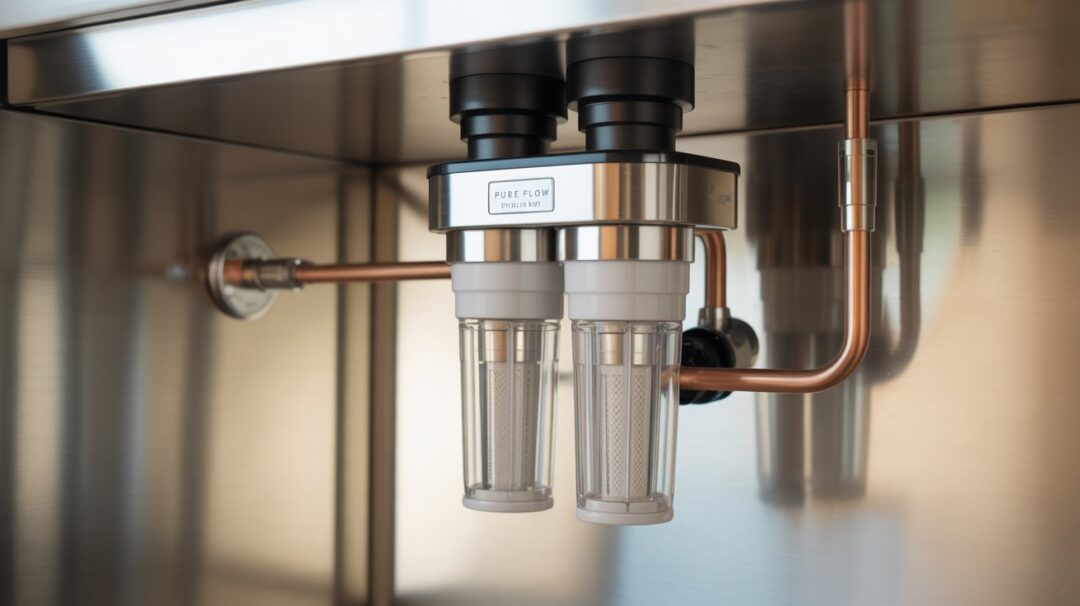
Popular Under Sink Water Filter Brands and Models
The market for under sink water filters is diverse, with numerous brands offering a range of systems to suit different needs and budgets. When selecting an under sink water filter, it’s crucial to consider not only the effectiveness of the system but also the reputation of the brand and the specific model’s features.
Top-Rated Systems for Different Budgets
Under sink water filter systems vary significantly in price, from affordable options to more expensive, premium models. Understanding the budget-friendly and premium choices can help consumers make informed decisions.
Budget-Friendly Options
For those on a tighter budget, brands like Aquasana and WaterChef offer reliable under sink water filters that don’t compromise on quality. These systems typically use activated carbon and other filtration methods to remove contaminants and improve taste.
Premium Systems and Their Benefits
Premium under sink water filters, such as those from ZeroWater and Berkey, offer advanced filtration capabilities, including reverse osmosis and ultrafiltration. These systems can remove up to 99.9% of contaminants, providing exceptionally pure drinking water.
Most Reliable Brands According to Consumer Reviews
Consumer reviews and ratings can provide valuable insights into the reliability and performance of under sink water filter brands. Brands that consistently receive high ratings are often those that offer a combination of quality, durability, and customer support.
Customer Satisfaction Ratings
Brands like Culligan and AKTIV are praised for their customer service and product reliability. High customer satisfaction ratings often reflect a brand’s commitment to quality and post-sales support.
Warranty and Support Considerations
A comprehensive warranty and responsive customer support are critical factors when choosing an under sink water filter. Brands that offer lengthy warranties and dedicated support, such as FilterEasy, demonstrate confidence in their products and commitment to customer satisfaction.
Making the Right Choice for Your Home
With numerous under sink water filter systems available, making the right choice for your home involves careful consideration of several factors. Choosing the ideal system depends on various aspects, including your household’s specific needs and water usage patterns.
Matching the System to Your Specific Needs
To select the most suitable under sink water filter, you must consider your family’s size and water consumption habits.
Family Size Considerations
A larger family requires a system with a higher filtration capacity. For instance, a family of four or more may need a system that can filter at least 100 gallons per day.
Water Usage Patterns
Understanding your water usage patterns is crucial. If you use water primarily for drinking and cooking, a basic carbon filtration system might suffice. However, if you have specific contaminant concerns, such as lead or nitrates, you may need a more advanced system like reverse osmosis.
| Family Size | Recommended Filtration Capacity |
|---|---|
| 1-2 | 50 gallons/day |
| 3-4 | 100 gallons/day |
| 5+ | 150 gallons/day |
Questions to Ask Before Purchasing
Before making a purchase, it’s essential to ask the right questions.
Certification and Testing Standards
Ensure the system is certified by a reputable third-party organization, such as NSF International or the Water Quality Association, and check if it has been tested for the contaminants you’re concerned about.
Future Upgrade Possibilities
Consider whether the system allows for future upgrades or replacements of filters. A modular design can be more cost-effective in the long run.
Conclusion
When deciding to purchase an under sink water filter system, it’s essential to weigh the benefits against the potential drawbacks. Improved water taste and odor, removal of harmful contaminants, and environmental benefits are significant advantages. However, initial cost, maintenance requirements, and space considerations must also be taken into account.
By assessing your water quality needs, budget, and available space, you can make an informed decision. Popular brands like Aquasana, Culligan, and ZeroWater offer reliable systems. Consider factors like filter replacement costs and installation requirements to ensure a smooth experience with your under sink water filter system.
Ultimately, investing in a suitable under sink water filter system can significantly enhance your drinking water quality, providing a healthier and more sustainable solution for you and your family.
Frequently Asked Questions
What is the difference between single and multi-stage under sink water filtration systems?
Single-stage systems use one type of filtration, whereas multi-stage systems use multiple types, such as activated carbon, reverse osmosis, and ultrafiltration, to remove a broader range of contaminants.
How often should I replace the filters in my under sink water filter system?
Filter replacement frequency depends on the system and usage, typically ranging from every 6 to 12 months. Check your system’s manual for specific guidance.
Can under sink water filters remove all contaminants from my tap water?
While under sink water filters can remove many contaminants, their effectiveness depends on the type of filter and the contaminants present. Testing your water quality can help determine the best filter for your needs.
Are under sink water filters more cost-effective than bottled water?
Yes, under sink water filters can be more cost-effective in the long run, as they eliminate the need for bottled water and reduce waste.
How do I know if an under sink water filter system is right for my home?
Consider factors such as your water quality needs, budget, available space, and installation requirements to determine if an under sink water filter system is suitable for your home.
Can I install an under sink water filter system myself, or do I need a professional?
Many under sink water filter systems are designed for DIY installation, but complex systems or those requiring plumbing modifications may necessitate hiring a professional.
How do under sink water filters compare to countertop filters?
Under sink water filters are generally more comprehensive and convenient, as they are installed directly under the sink and can filter all water dispensed from that faucet.
What are the environmental benefits of using an under sink water filter?
Under sink water filters reduce the need for single-use plastic water bottles, thereby decreasing plastic waste and the carbon footprint associated with bottled water production and transportation.
Are there any maintenance requirements for under sink water filters?
Yes, regular filter replacements and occasional system checks are necessary to ensure optimal performance and longevity of the filter.
Can under sink water filters improve the taste and odor of my tap water?
Yes, many under sink water filters, especially those using activated carbon, can significantly improve the taste and odor of tap water by removing chlorine and other impurities.

